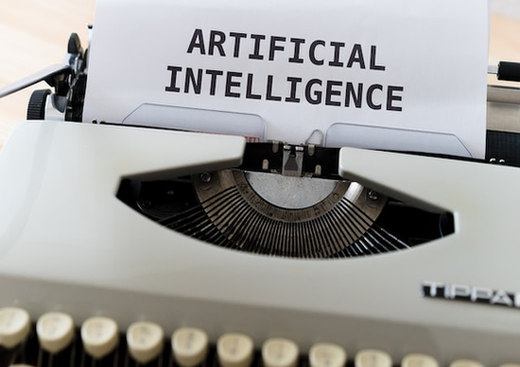Artificial Intelligence (AI) Meaning, Examples, and Types Explained
 Photo by Markus Winkler on Unsplash
Photo by Markus Winkler on Unsplash
Artificial Intelligence (AI) is a rapidly evolving field of computer science that focuses on developing intelligent machines capable of performing tasks that typically require human intelligence. AI systems mimic human cognitive functions like learning, problem-solving, and decision-making, enabling them to analyze and interpret complex data, adapt to new situations, and provide valuable insights. In this article, we will delve into the meaning, history, understanding, components, types, examples, applications, and future of AI.
Meaning of Artificial Intelligence
Artificial Intelligence, as the term suggests, refers to the development of "intelligent" machines. These machines possess the ability to perceive and analyze their environment, reason, learn, and make decisions to achieve specific goals. The aim is to create systems that can perform tasks autonomously, saving time and effort while improving efficiency and accuracy.
Brief History
The roots of AI can be traced back to the mid-20th century when computer scientists began exploring the concept of intelligent machines. In 1956, the Dartmouth Conference marked the birth of AI as a formal research field. Over the years, AI has undergone various periods of advancement, with significant breakthroughs in areas like machine learning, natural language processing, computer vision, and robotics.
Understanding AI
AI encompasses various subfields and approaches, but at its core, AI aims to create systems capable of exhibiting human-like intelligence. Understanding AI involves exploring key concepts like:
1. Machine Learning
Machine learning is a critical aspect of AI that involves training machines to learn from data without explicit programming. It enables machines to recognize patterns, make predictions, and improve their performance over time.
2. Deep Learning
Deep learning is a subset of machine learning that focuses on training artificial neural networks with multiple layers. By leveraging large amounts of data, deep learning algorithms can analyze complex information and extract meaningful insights.
3. Natural Language Processing (NLP)
NLP enables machines to understand and interpret human language. It involves tasks like text analysis, sentiment analysis, machine translation, and chatbots, which enhance human-computer interactions.
How AI Works
AI systems rely on data, algorithms, and computational power to perform tasks. The process generally involves:
Data Collection
AI systems require vast amounts of data, either labeled or unlabeled, to train and learn from.Data Preprocessing
Raw data is processed and prepared for training by removing noise, normalizing, and transforming it into a suitable format.Training
The AI system is trained using machine learning or deep learning algorithms, iteratively refining its performance using the available data.Testing & Evaluation
Once trained, the AI system undergoes rigorous testing to assess its accuracy, performance, and reliability.Deployment
Once the system has been evaluated, it can be deployed to perform real-world tasks and deliver the desired outcomes.Examples of AI
AI is widely used in various domains and applications. Here are a few examples:
Virtual Assistants:
Virtual assistants like Apple's Siri, Amazon's Alexa, and Google Assistant leverage AI to understand and respond to voice commands, perform tasks, and provide information.
Recommendation Systems:
Online platforms like Netflix and Spotify use AI to analyze user preferences and recommend personalized content based on their behaviors and choices.
Autonomous Vehicles:
Self-driving cars rely on AI algorithms to perceive their surroundings, make decisions in real-time, and navigate safely on roads.
Image and Speech Recognition:
AI-powered systems can recognize and interpret images, detect objects, and understand spoken language, enabling applications like facial recognition and speech-to-text transcription.
Fraud Detection:
AI algorithms can analyze patterns in financial transactions, identify anomalies, and detect potential fraudulent activities, helping to safeguard against financial crimes.
Types of AI
AI can be classified into different types based on their capabilities:
Narrow AI
Also known as Weak AI, this type of AI is designed to perform specific tasks within a limited domain. Examples include voice recognition and recommendation systems.
General AI
Also referred to as Strong AI or AGI (Artificial General Intelligence), this type of AI aims to possess human-level intelligence and be capable of performing any intellectual task that a human can do.
Superintelligent AI
This hypothetical type of AI surpasses human intelligence and can outperform humans in virtually every cognitive task.
Applications of AI
AI has numerous real-world applications in various sectors:
Healthcare
AI is used in medical diagnosis, drug discovery, personalized treatment plans, and health monitoring systems.
Finance
AI assists in fraud detection, algorithmic trading, risk assessment, and providing personalized financial advice.
Business
AI is employed in customer service chatbots, predictive analytics, demand forecasting, and process automation.
Manufacturing
AI optimizes processes, predictive maintenance, quality control, and robotics in manufacturing industries.
Cybersecurity
AI helps in threat detection, anomaly detection, and response automation to tackle rapidly evolving cyber threats.
Future of AI
The future of AI holds immense potential. Researchers are continuously pushing the boundaries of AI, aiming to develop more advanced algorithms, improve the understanding of human cognition, enhance natural language processing, and create AI systems capable of higher levels of autonomy. The integration of AI with other emerging technologies like the Internet of Things (IoT) and blockchain will further expand the possibilities of AI applications and revolutionize various industries.
In conclusion, AI is revolutionizing the world across various domains, enabling machines to perform tasks that previously required human intelligence. With its rapid advancements, AI has the potential to shape the future, improve efficiency, and create transformative impacts on society, making it one of the most exciting and dynamic fields of technology today.
Related technology




More technology »
Latest Posts

Top 5 best cheapest and fastest VPS hosting providers

What is remote work? (Meaning, Examples, Type, Pros and Cons)

How to become a professional Writer, (step-by-step guide)

Tips for becoming a successful public speaker, and monetizing your skill

Creating And Selling A Successful YouTube Channel
More Posts »